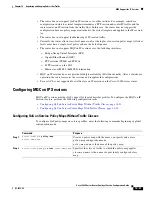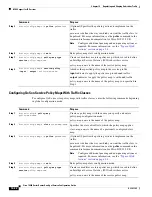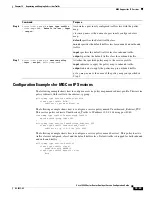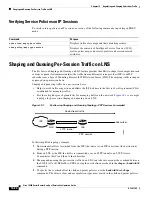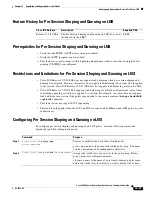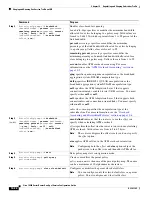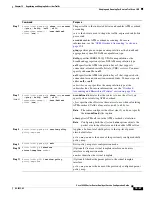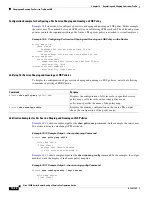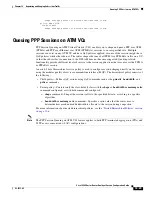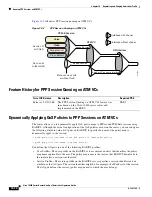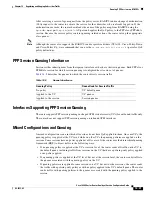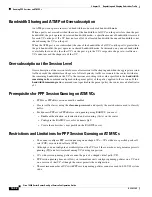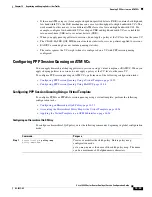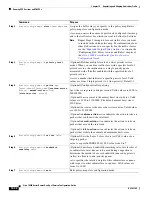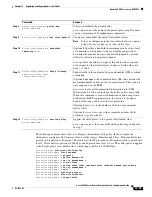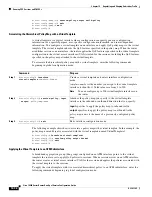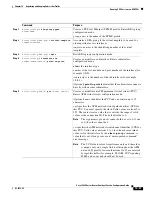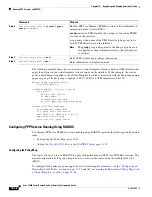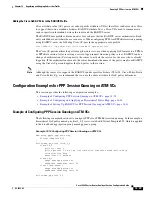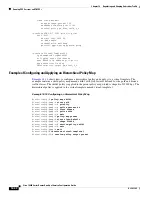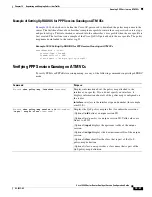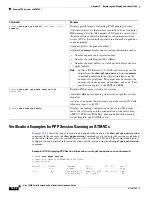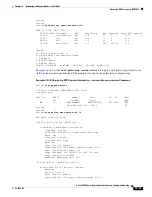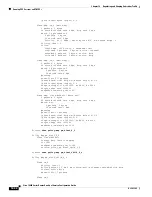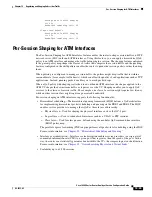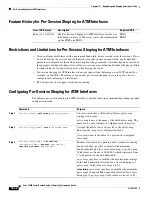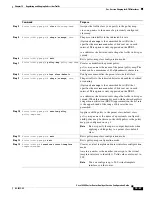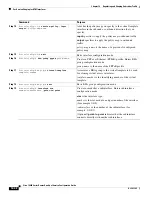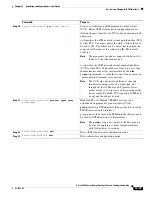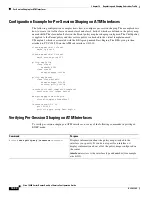
18-35
Cisco 10000 Series Router Quality of Service Configuration Guide
OL-7433-09
Chapter 18 Regulating and Shaping Subscriber Traffic
Queuing PPP Sessions on ATM VCs
The following example shows how to configure a hierarchical QoS policy. In the example, the
child-policy configures QoS features for two traffic classes: Premium and Silver. Premium traffic has
priority and is policed at 40 percent. The router sets the IP precedence of Premium traffic to precedence
level 3. Silver traffic is policed at 80000 bps and IP precedence level 3 is set. The child-policy is applied
to the Parent policy class-default class, which shapes traffic to 200,000 Kbps.
Router(config)#
policy-map child-policy
Router(config-pmap)#
class Premium
Router(config-pmap-c)#
priority
Router(config-pmap-c)#
police percent 40
Router(config-pmap-c)#
set ip precedence 3
Router(config-pmap-c)#
class Silver
Router(config-pmap-c)#
police 80000 10000 conform-action transmit exceed-action drop
Router(config-pmap-c)#
set ip precedence 5
Router(config-pmap-c)#
exit
Router(config-pmap)#
policy-map Parent
Router(config-pmap)#
class class-default
Router(config-pmap-c)#
shape 200000
Step 8
Router(config-pmap)#
policy-map
policy-map-name
Creates or modifies the parent policy.
policy-map-name
is the name of the parent policy map. The name
can be a maximum of 40 alphanumeric characters.
Step 9
Router(config-pmap)#
class
class-default
Configures or modifies the parent class-default class.
Note
You can configure only the class-default class in a parent
policy. Do not configure any other traffic class.
Step 10
Router(config-pmap-c)#
bandwidth
remaining
ratio
(Optional) Specifies a bandwidth-remaining ratio for class-level
or subinterface-level queues to be used during congestion to
determine the amount of excess bandwidth (unused by priority
traffic) to allocate to non-priority queues.
ratio
specifies the relative weight of this subinterface or queue
with respect to other subinterfaces or queues. Valid values are
from 1 to 1000.
Step 11
Router(config-pmap-c)#
shape
[
average
]
mean-rate
[
burst-size
]
[
excess-burst-size
]
Shapes traffic to the indicated bit rate and enables ATM overhead
accounting.
(Optional)
average
is the committed burst (Bc) that specifies the
maximum number of bits sent out in each interval. This option is
only supported on the PRE3.
mean-rate
is also called committed information rate (CIR).
Indicates the bit rate used to shape the traffic, in bits per second.
When this command is used with backward explicit congestion
notification (BECN) approximation, the bit rate is the upper
bound of the range of bit rates that are permitted.
(Optional)
burst-size
is the number of bits in a measurement
interval (Bc).
(Optional)
excess-burst-size
is the acceptable number of bits
permitted to go over the Be.
Step 12
Router(config-pmap-c)#
service-policy
policy-map-name
Applies the child policy to the parent class-default class.
policy-map-name
is the name of the child policy map configured
in step 1.
Command
Purpose

